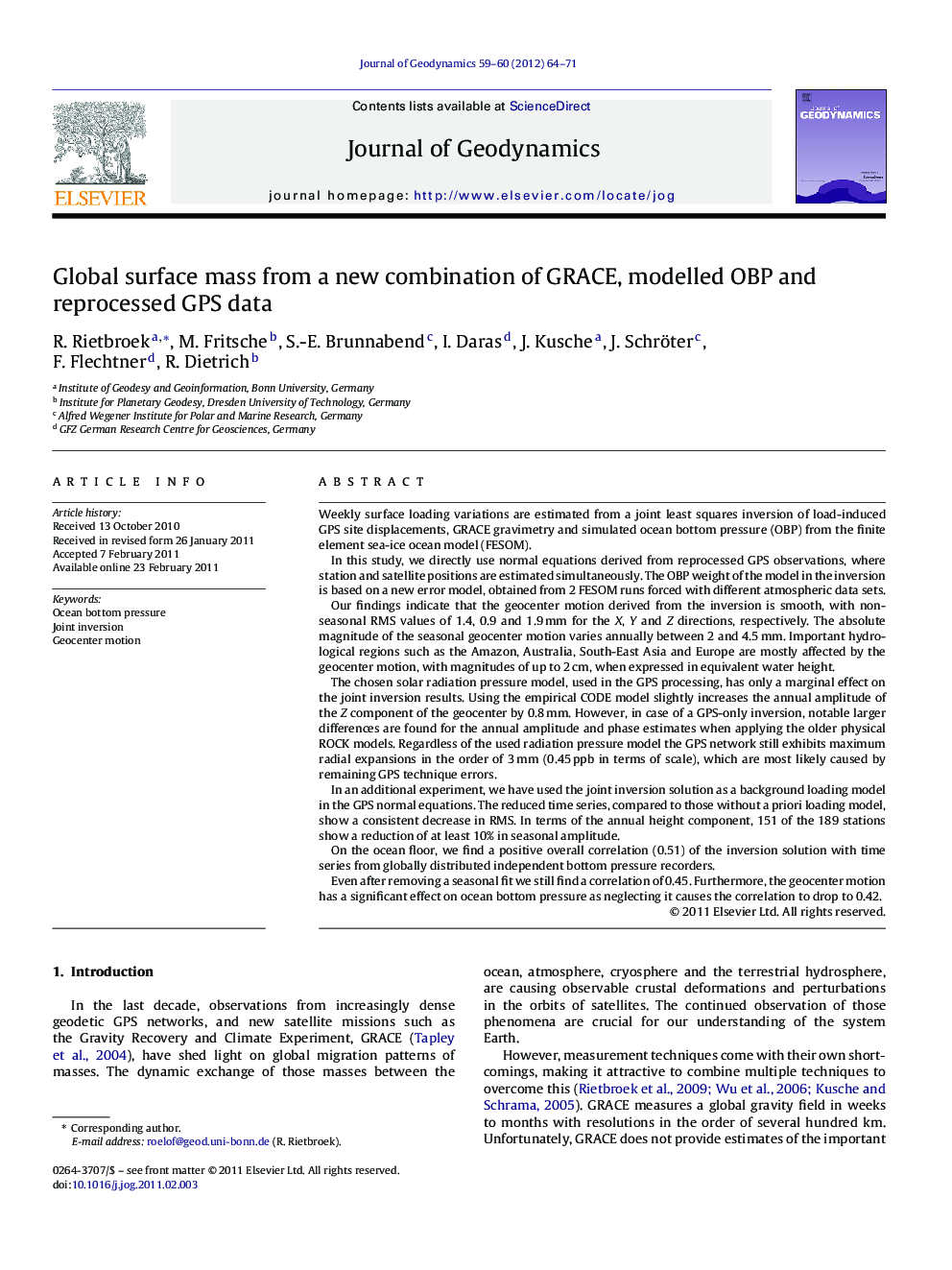| Article ID | Journal | Published Year | Pages | File Type |
|---|---|---|---|---|
| 4688289 | Journal of Geodynamics | 2012 | 8 Pages |
Weekly surface loading variations are estimated from a joint least squares inversion of load-induced GPS site displacements, GRACE gravimetry and simulated ocean bottom pressure (OBP) from the finite element sea-ice ocean model (FESOM).In this study, we directly use normal equations derived from reprocessed GPS observations, where station and satellite positions are estimated simultaneously. The OBP weight of the model in the inversion is based on a new error model, obtained from 2 FESOM runs forced with different atmospheric data sets.Our findings indicate that the geocenter motion derived from the inversion is smooth, with non-seasonal RMS values of 1.4, 0.9 and 1.9 mm for the X, Y and Z directions, respectively. The absolute magnitude of the seasonal geocenter motion varies annually between 2 and 4.5 mm. Important hydrological regions such as the Amazon, Australia, South-East Asia and Europe are mostly affected by the geocenter motion, with magnitudes of up to 2 cm, when expressed in equivalent water height.The chosen solar radiation pressure model, used in the GPS processing, has only a marginal effect on the joint inversion results. Using the empirical CODE model slightly increases the annual amplitude of the Z component of the geocenter by 0.8 mm. However, in case of a GPS-only inversion, notable larger differences are found for the annual amplitude and phase estimates when applying the older physical ROCK models. Regardless of the used radiation pressure model the GPS network still exhibits maximum radial expansions in the order of 3 mm (0.45 ppb in terms of scale), which are most likely caused by remaining GPS technique errors.In an additional experiment, we have used the joint inversion solution as a background loading model in the GPS normal equations. The reduced time series, compared to those without a priori loading model, show a consistent decrease in RMS. In terms of the annual height component, 151 of the 189 stations show a reduction of at least 10% in seasonal amplitude.On the ocean floor, we find a positive overall correlation (0.51) of the inversion solution with time series from globally distributed independent bottom pressure recorders.Even after removing a seasonal fit we still find a correlation of 0.45. Furthermore, the geocenter motion has a significant effect on ocean bottom pressure as neglecting it causes the correlation to drop to 0.42.
► We estimate weekly surface loading by means of a joint inversion. ► GPS network deformations, GRACE and simulated OBP are combined using loading theory. ► Adding the geocenter motion increases correlations with bottom pressure recorders. ► GPS station time series show reductions after removing the inversion results.
